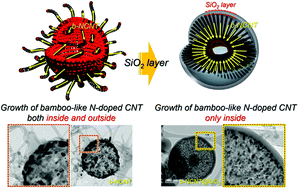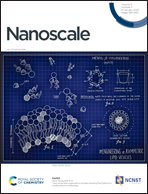Structural combination of polar hollow microspheres and hierarchical N-doped carbon nanotubes for high-performance Li–S batteries†
Abstract
Hierarchical structured materials constructed with conductive carbon materials have been extensively studied as S host materials for Li–S batteries. However, their outwardly developed hierarchical structures, which do not contain structures or materials to inhibit polysulfide dissolution, lead to the dissipation of dissolved polysulfides and poor dispersion properties during the slurry-making process, which results in non-uniformity in the cathodes. Herein, an assembly of polar materials (hollow structured SiO2 microspheres) and electrically conductive hierarchical N-doped bamboo-like carbon nanotubes (b-NCNTs) is designed as an efficient S host material for minimizing the dissolution of polysulfides during Li–S battery operations. Highly aligned and packed b-NCNTs are grown in hollow structured SiO2 microspheres. The SiO2 layer coated on the surface of the hollow CoFe2O4 microspheres plays a key role in the synthesis of easily dispersible hierarchical b-NCNTs microspheres (b-NCNTs@SiO2). The S-loaded b-NCNTs@SiO2 electrodes show better cycling stability than S-loaded b-NCNTs electrodes. The polysulfide trapping of the polar SiO2 layer and the well-developed b-NCNTs minimize the dissolution of polysulfides during cycling. In addition, the introduction of electronegative N atoms into the b-NCNTs lattice enhances their polysulfide trapping ability. The S-loaded b-NCNTs@SiO2 electrodes exhibit stable discharge capacities of >771 mA h g−1 over 195 cycles at a current density of 0.5 C and a high reversible capacity of 486 mA h g−1 even at a high current density of 5.0 C.



 Please wait while we load your content...
Please wait while we load your content...